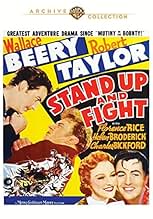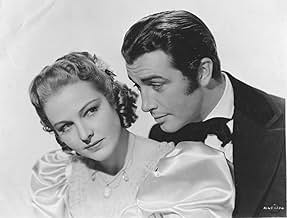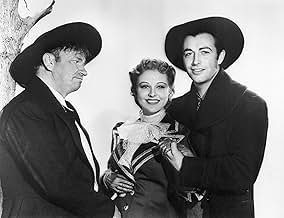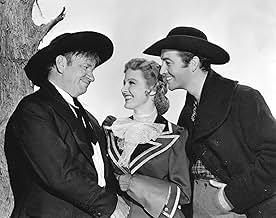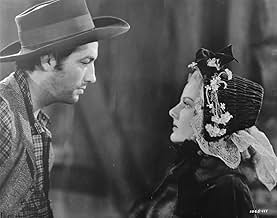Añade un argumento en tu idiomaIt starts in 1844 in Maryland, where Blake Cantrell, plantation owner with slaves, is forced by debts to sell his estate and his people. Then he leaves for Cumberland, looking for a job (fir... Leer todoIt starts in 1844 in Maryland, where Blake Cantrell, plantation owner with slaves, is forced by debts to sell his estate and his people. Then he leaves for Cumberland, looking for a job (first time in his life), and ends up working for a stagecoach line run by Boss Starkey and ow... Leer todoIt starts in 1844 in Maryland, where Blake Cantrell, plantation owner with slaves, is forced by debts to sell his estate and his people. Then he leaves for Cumberland, looking for a job (first time in his life), and ends up working for a stagecoach line run by Boss Starkey and owned by Susan Griffith. Before love and friendship can triumph, Cantrell will have to commi... Leer todo
- Dirección
- Guión
- Reparto principal
- Premios
- 2 premios en total
- Whittingham P. Talbot
- (escenas eliminadas)
- Chinese Cook
- (escenas eliminadas)
- (as Lee Tung Foo)
Reseñas destacadas
Wonderful scenes of this train running are had in the movie. The Lafayette is an historic train, so train lovers, enjoy.
I didn't expect much from this movie, and was thoroughly and positively surprised by the sharp writing and ebullient acting, and contrary to many A-movies of its day its aim is no way an aesthetic 'arty' one. Made in 1939, this movie addresses all sorts of controversial issues, and they have a way of taking you by surprise along the way. The movie is really about abolitionism and treats its subject with remarkable subtlety, although why and how the lynch-mob, the one that we encounter in the last third of the film, goes after white man Starkey is never made quite clear. Cantrell's gradual moral reform is well-explained and plausible, not least because of Taylor's warmth and humanity in the part. Yes, he is handsome, but here it is almost besides the point. Wallace Beery has a field day with the larger-than-life captain, very cleverly balancing on the edge of buffoonery but with plenty of edge and ambiguity.
See it, it makes a deep impression.
The story is one of the stranger ones I've ever seen concerning slavery. It isn't really bad...just very, very unusual--especially in its way of portraying the fugitive slave trade. The film begins with Robert Taylor selling off his plantation and slaves because of his debts. It's obvious that he's pretty attached to his slaves and makes sure the families aren't separated--but he STILL sells them like they are property. So, seeing him working for the abolitionist cause later in the film is a bit of a surprise.
A bit later, officials with the B&O Railroad try to hire Taylor as an agent to investigate the illegal slave trade and how it might relate to a local transportation company. I liked seeing the old fashioned trains from the 1840s that you see in the film, but Taylor wasn't as impressed nor was he willing to take the railroad's offer. However, oddly, investigating this trade is EXACTLY what Taylor ends up doing--and it hits close to home when one of his old slaves is killed by the scum behind the scheme.
Taylor's nemesis throughout the film is the mean and blustery Wallace Beery. His acting, as usual, is far from subtle and he chews up practically every scene in which he appears. As a result, Taylor's good acting is all the more obvious! Overall, an interesting film--mostly because other films made around the same time didn't seem to care much about the plight of slaves. By comparison, think about the way Blacks are portrayed in "Gone With the Wind" which also came out the same year. Sure, it's a great film, but it also made slavery seem not so bad! So "Stand Up and Fight" should at least be given some credit for its rather progressive theme. The only major complaint I had about the film was the ending--it seemed a bit weak.
¿Sabías que...?
- CuriosidadesThe $850 that Blake has left over from his estate in 1844 would equate to about $27,800 in 2015.
- PifiasCharles Bickford's character is named Morgan throughout the movie, but he's called Arnold in the closing credits.
- ConexionesReferenced in Electrical Power (1938)
Selecciones populares
Detalles
- Duración1 hora 37 minutos
- Relación de aspecto
- 1.37 : 1
Contribuir a esta página



